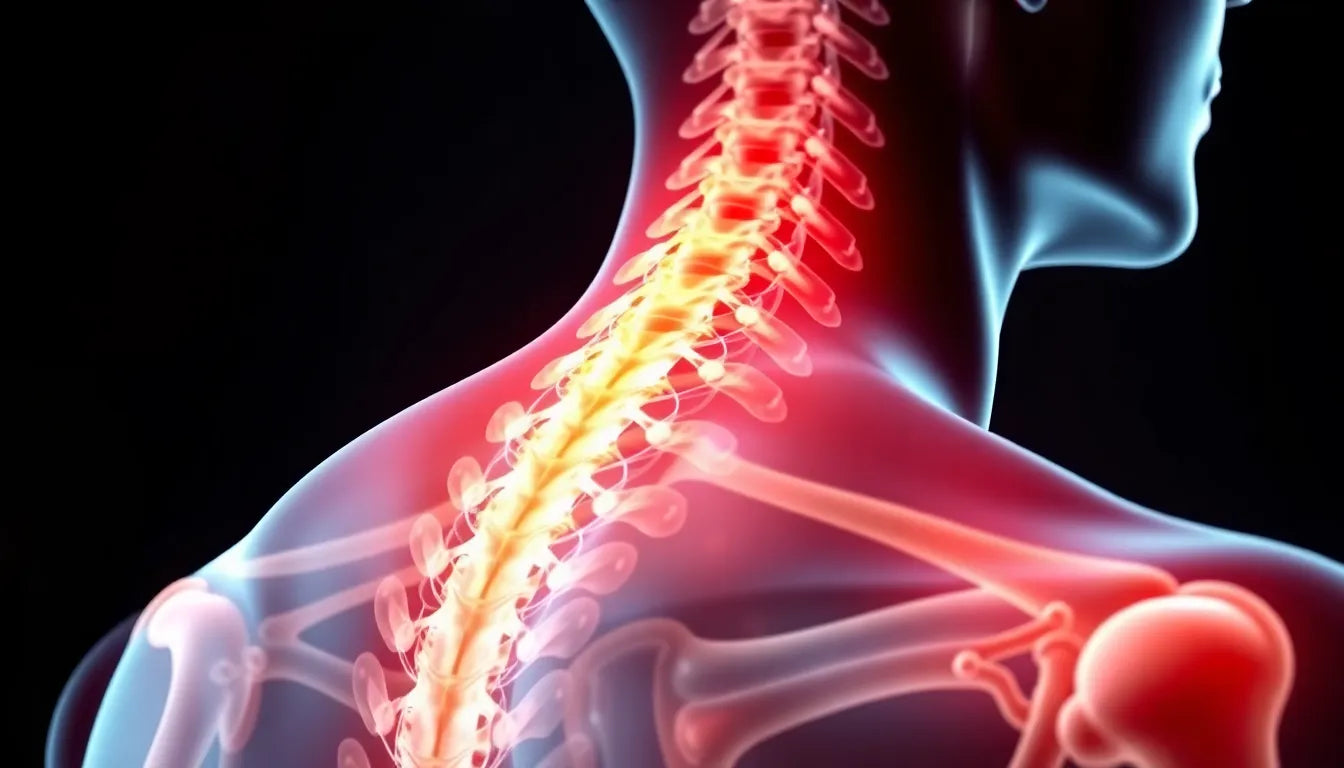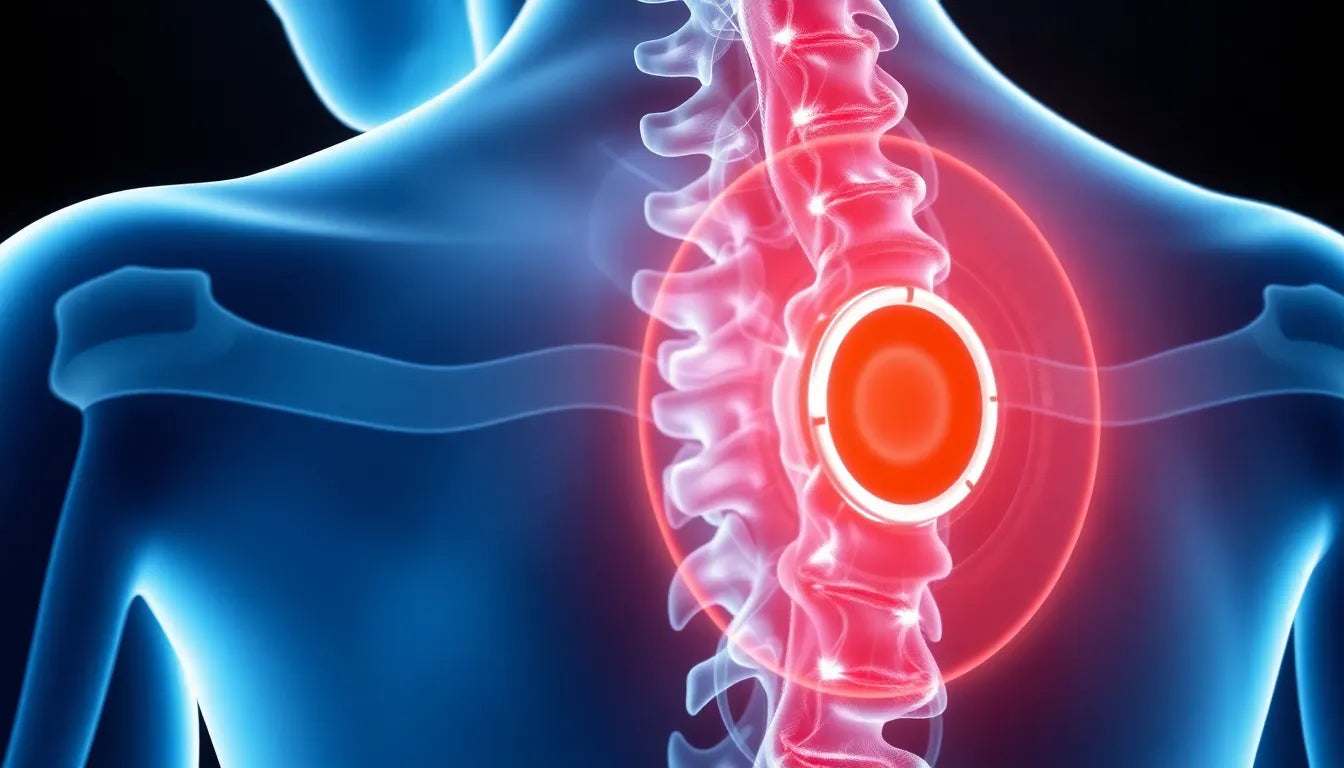The silent struggle of back pain is a common plight for millions around the globe, often stemming from a condition known as a herniated disc. Despite its prevalence, the underlying causes of this debilitating issue remain a mystery to many. Understanding what causes a herniated disc is crucial, not only for those already suffering but also for individuals looking to prevent this condition from disrupting their lives.
A herniated disc occurs when the soft, jelly-like center of a spinal disc pushes through a crack in its tougher exterior casing. This can lead to pain, numbness, or weakness, particularly if the herniation presses against nearby nerves. The condition is most commonly found in the lower back but can also occur in the neck. Its impact on daily life can be significant, affecting everything from mobility to the ability to perform simple tasks.
Identifying the causes of a herniated disc is essential for both prevention and effective management. Often, individuals are unaware of the various factors that can lead to this condition. While some causes are common knowledge, such as improper lifting techniques or age-related degeneration, there are also less obvious triggers that can contribute to disc herniation.
Understanding the common and hidden triggers
To truly grasp the risk factors involved, it's important to explore both the mechanical and lifestyle elements that play a role. Age-related degeneration is a natural process that affects everyone, leading to weakened discs over time. However, sudden excessive strain, such as that experienced during heavy lifting or unexpected movements, can also cause a disc to herniate.
Moreover, lifestyle choices significantly impact spinal health. A sedentary lifestyle, improper lifting techniques, obesity, and smoking are all factors that can exacerbate the risk of developing a herniated disc. Each of these elements contributes to the weakening of spinal structures, making them more susceptible to injury.
Beyond these well-known factors, genetic predisposition and environmental influences also play a crucial role. Research has shown that certain individuals may be genetically inclined to develop disc problems, while repetitive activities, frequent driving, and other environmental stressors can further strain the spine.
By uncovering these hidden triggers, individuals can take proactive steps to protect their spinal health. Understanding the causes of a herniated disc is the first step in preventing this condition and maintaining a pain-free, active lifestyle.
mechanical and age-related causes of herniated discs
The most common mechanical cause of a herniated disc is age-related degeneration. As we age, the spinal discs naturally lose some of their water content, which makes them less flexible and more prone to tearing or rupturing with even minor strains. This process, known as disc degeneration, is an inevitable part of aging. However, its impact varies among individuals based on genetic factors and lifestyle choices.
In addition to the gradual wear and tear, a herniated disc can occur from a single excessive strain. This often happens during heavy lifting or sudden, awkward movements that put a significant amount of pressure on the spine. For instance, lifting a heavy object improperly can cause the disc to bulge or rupture. It's crucial to use proper techniques when lifting, such as keeping the back straight and lifting with the legs, to minimize this risk.
lifestyle and behavioral factors influencing disc health
A sedentary lifestyle is another significant contributor to the risk of developing a herniated disc. Lack of regular physical activity can lead to weakened muscles, particularly in the core and lower back, which are essential for supporting the spine. Over time, this weakness can increase the likelihood of disc herniation, as the spine is less supported and more susceptible to injury.
Obesity also plays a critical role in the health of spinal discs. Excess body weight puts additional stress on the spine, accelerating the degeneration process and increasing the risk of herniation. Maintaining a healthy weight through a balanced diet and regular exercise can significantly reduce this pressure and protect spinal health.
Smoking is a less obvious but equally important factor. Nicotine and other chemicals in cigarettes can reduce blood flow to the discs, depriving them of essential nutrients and oxygen. This can lead to faster degeneration and a higher likelihood of herniation.
genetic and environmental influences on herniated discs
Genetic predisposition also plays a role in the likelihood of developing a herniated disc. Research indicates that certain genetic factors can influence the structure and integrity of spinal discs, making some individuals more susceptible to herniation than others. Understanding one's genetic risk can help in taking proactive measures to protect spinal health.
Environmental factors, such as repetitive activities and frequent driving, can further strain the spine. Jobs or hobbies that require repetitive motions, such as bending or twisting, can wear down the discs over time. Similarly, long periods of driving can contribute to disc problems due to the prolonged sitting and vibration exposure.
By acknowledging these genetic and environmental influences, individuals can better tailor their lifestyle choices to mitigate the risk of herniated discs. Simple changes, such as incorporating regular breaks into long drives or modifying repetitive tasks, can make a significant difference in maintaining spinal health.
proactive steps for spinal health
Understanding the diverse causes of herniated discs is crucial for prevention and management. By addressing both the mechanical and lifestyle factors, individuals can take proactive steps to protect their spinal health. This includes adopting proper lifting techniques, engaging in regular physical activity, maintaining a healthy weight, and avoiding smoking.
Furthermore, being aware of genetic predispositions and environmental stressors allows for more informed decisions regarding daily activities and long-term health strategies. By uncovering these hidden triggers, individuals can better prevent the onset of a herniated disc and maintain a pain-free, active lifestyle.
Preventing and managing herniated discs
Prevention and effective management of herniated discs hinge on a comprehensive approach that addresses both physical and lifestyle factors. Regular exercise is one of the most effective strategies to strengthen back muscles and support spinal health. Engaging in activities that enhance flexibility and core strength, such as yoga or pilates, can significantly reduce the risk of disc herniation by providing better support to the spine.
Weight management is another crucial aspect of preventing herniated discs. Maintaining a healthy weight through a balanced diet and regular physical activity helps to alleviate the pressure on the spine. Excess weight, particularly around the abdomen, can strain the lower back, leading to increased wear and tear on the spinal discs. By keeping weight in check, individuals can reduce this pressure and protect their spinal health.
Ergonomic adjustments in daily activities are also essential for minimizing strain on the spine. Ensuring that workstations are set up correctly, with chairs that provide adequate lumbar support and desks at the right height, can prevent poor posture and reduce the risk of disc problems. Additionally, using proper techniques when lifting objects—such as bending at the knees and keeping the back straight—can help avoid unnecessary strain on the spinal discs.
By integrating these strategies into daily routines, individuals can proactively manage their risk of developing herniated discs and maintain a healthier spine. Understanding and addressing both genetic and environmental factors further enhance these efforts, enabling a comprehensive approach to spinal health.
Conclusion
In conclusion, understanding the hidden triggers of herniated discs is crucial for both prevention and effective management. By recognizing the mechanical, lifestyle, genetic, and environmental factors that contribute to disc herniation, individuals can take proactive steps to protect their spinal health. Regular exercise, weight management, and ergonomic adjustments are key strategies in this effort. By addressing these elements, it is possible to reduce the risk of herniated discs and enjoy a pain-free, active lifestyle.
Frequently Asked Questions
What are the symptoms of a herniated disc?
Symptoms can include pain, numbness, or weakness in an arm or leg, depending on the location of the herniated disc.
How is a herniated disc diagnosed?
Diagnosis typically involves a physical exam, imaging tests such as MRI or CT scans, and a review of medical history.
What are the treatment options for a herniated disc?
Treatments range from conservative methods like physical therapy and medication to surgical interventions in severe cases.
Can herniated discs heal on their own?
In many cases, symptoms improve over time with conservative treatment, but some may require more intensive intervention.
Are there specific exercises that can help prevent a herniated disc?
Yes, exercises that strengthen core muscles and improve flexibility can help support the spine and reduce the risk of herniation.


















